The Greek Islands are many travellers’ idea of the idyllic holiday spot. Whitewashed villages with blue domed churches, windmills tilting on the hillside, beautiful beaches set on the azure Aegean, flower-draped tavernas serving fresh-off-the-boat seafood and striking ancient ruins.
With over 200 inhabited islands to explore. They spread out across the seas that surround Greece, from the Aegean to the south and east of the mainland to the Ionian Sea off the western coast.
Here is our Ultimate Guide to the best Greek Islands:
Santorini
Santorini has one of the most spectacular settings in the world. The cliffs of the island were formed by a massive volcanic explosion. Part of the Cyclades archipelago, Santorini is dry and rocky, but its setting is unparalleled. Picturesque villages like Fira and Oia perch on the clifftops. The island is perfect for a romantic visit or those looking for the most photogenic locations in the islands. There are historic ruins such as the excavated town of Akrotiri, black sand beaches, and even wineries to visit.
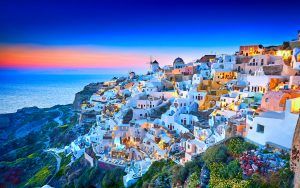
Crete
Crete is the largest Greek Island, with its own culture and history. Home to the ancient Minoan civilisation, Crete could easily occupy a full week of touring this wild and beautiful island. Cities, like Heraklion, are waiting to be explored. A short distance away lie the magnificent ruins of Knossos Palace with its amazing reconstructions and associations with the legend of Theseus and the Minotaur. Fascinating smaller cities like Chania and Rethymnon invite strolls in their old towns, and hikers will want to seek out the beautiful Samaria Gorge. Great beaches include Elafonissi with its pink sand.
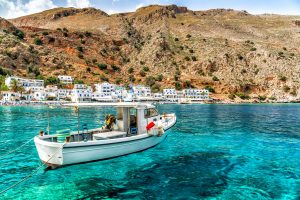
Mykonos
Mykonos has long been famous for its nightlife and glamorous beaches. Its central village is stunningly beautiful, with a row of windmills perched on the hillside and the waves splashing against the seafront at Little Venice with its open air tavernas. Wander the twisting lanes and delight in the flower bedecked buildings and charming atmosphere. Part of the Cyclades archipelago, Mykonos also serves as a point of departure for the ferry ride to the island of Delos, which is an uninhabited island with ancient ruins honouring its role as the birthplace of Apollo.

Corfu
Corfu is the best known of the Ionian islands, which are west of the Greek mainland, closer to Italy than Athens! These are green and forested islands with their own unique architecture and culture. Corfu’s old town, a UNESCO World Heritage Site, shows the Italian influence with its Venetian architecture and neoclassical buildings. This is a cosmopolitan destination for culture and sightseeing, picturesque villages and inviting beaches in a lovely, wooded setting.
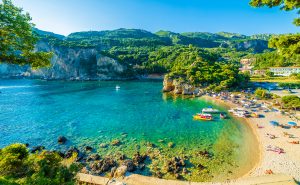
Naxos
Naxos is a great choice for adventure lovers, with a wealth of outdoor recreational opportunities. Sitting at the centre of the Cyclades archipelago, Naxos is a large island of mountains, lush valleys, rushing streams and beautiful beaches set on small coves. The meltemi winds offer windsurfers and kiters great opportunities for ocean adventure. While other activities include mountain biking, hiking, and sailing. Visit Naxos Old Town with its Venetian architecture and castle ruins. The iconic trademark of Naxos is Portara, the gate of an ancient temple dedicated to Apollo.
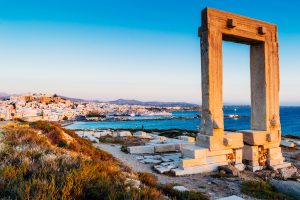
Milos
Milos offers a fantastic variety of scenic landscapes to explore, with amazing beaches of colourful rock formations and the famous Kleftiko cove. We also love the moon-like setting at Sarakiniko with its smooth white rocks. Milos is in the southwestern part of the Cyclades. There are hot springs, caves, early Christian catacombs, and archaeological sites to explore. Plaka, the charming capital, has one of the largest natural harbours in the Mediterranean. This is the island where the famous Venus de Milo statue was found!
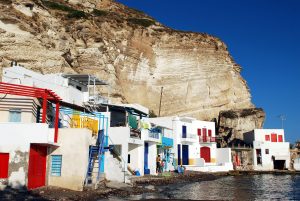
Paros
Another great choice within the Cyclades islands is Paros. Home to the most famous white marble in Greece that was used to construct some of the sculptural and architectural masterpieces of Classic Greece. The island boasts long beaches, outdoor activities like mountain biking, and picturesque villages. These include the capital of Paroikia, with its winding alleyways and traditional tavernas. Another interesting destination is the fishing village of Naousa with its half sunken Venetian castle and Aegean Sea views.
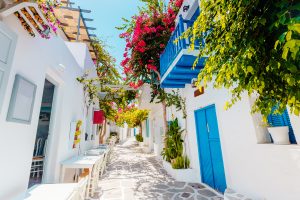
Syros
This small and laid-back Cycladic Island has a remarkable capital in Ermoupoli. Pastel-hued neoclassical houses cascade down its hillside and it features the blue-domed Agios Nikolaos Church. The Ano Syros medieval upper town has narrow alleys to lose yourself in and sweeping views over the coastline. The island has a dynamic cultural scene and a rich history. There are several fine sandy beaches such as at Galissas with its sheltered cove.
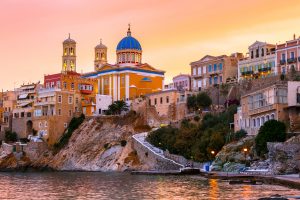
Rhodes
Rhodes is one of the largest Greek islands, part of the Dodecanese archipelago situated close to Turkey. These islands were occupied by Italy in 1912, and only became part of Greece in 1948. The cultural influences and architecture here are intriguingly different. There is a medieval walled city to explore in Rhodes town, plus the Palace of the Grandmaster of the Knights of St. John. We recommend a visit the town of Lindos, which has a scenic Acropolis with ruins of a castle that affords stunning views over the sea and coastline.
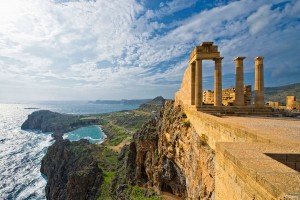
Hydra
Hydra is one of the Saronic Gulf islands, located very close to Athens. It is easily reachable even for a day’s excursion by ferry or hydrofoil. Hydra offers a rich naval history with a charming harbour area that is a delight to wander. Enjoy the beach areas and historic captains’ mansions with neoclassical architecture lining the waterfront.
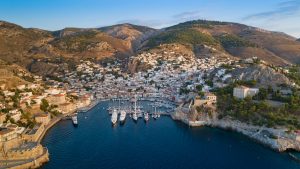
How to get around the islands
Greece’s islands are spread across six main groups, so careful planning is necessary. Many of the Greek islands have airports and can easily be reached by flights from Athens. An extensive ferry system also provides access to the islands from the port of Piraeus.









































